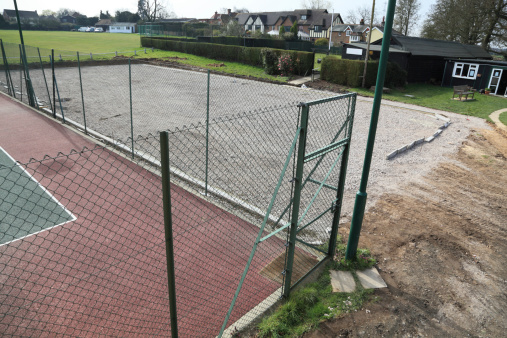The majority of the people contemplating a durable tennis court often have a lot of questions. Since building tennis court is not only expensive but relatively involves a long term investment. The construction of a tennis court involves several factors to consider. Without the advice of experienced personnel, it often becomes difficult to build a perfect durable tennis court.
Relevant questions before constructing a tennis court:
Is it necessary to find a professional tennis court contractor?
Yes. A qualified contractor should be selected considering the following factors:
Contractors should be knowledgeable and have had experience dealing with drainage, types of surface, slopes, lighting, base materials, fencing, maintenance, resurfacing and acceptable tolerance. The contractors should also provide first-hand inspection of the court and ideally pay attention to financial responsibilities and the ability to meet the work schedule. In addition, they are also responsible for providing a guarantee against defective materials or workmanship.
What is the recommended area for a tennis court?
The standard size of a single court is 60' *120'. As per the International Tennis Federation, the minimum required dimension should be 56'*114'. The recommended size for multiple court complexes should be 60'*120' and allow a gap of 24' between the courts. In a nutshell:
- The minimum required court area should be 30.48 m long * 15.2m wide
- The official championship court area should be36.57m long * 18.30m wide
- For the normal competitive play, the required dimension should be 33.50 m long *16.40m wide
- All other lines except the baseline should be 25mm-50mm wide.
What are the best substrates required?
For a hard tennis court, you can use either asphalt or concrete substrate. Although asphalt involves a lower installation cost, it gradually deteriorates. The court easily involves the development of structural cracks and birdbaths. On the contrary, concrete substrate can be either standard concrete court or cushioned concrete court. The former consists of four inches of concrete with a medium broom finish covered over a properly graded sub-base. It is important to install a vapour barrier over the sub base before the concrete is decanted. This barrier will prevent moisture from being drawn into the concrete. The latter is designed with a rubberized cushioning system to ease the pain of playing on a concrete court. The cushioning system is applied between the acrylic resurfacing product and the acrylic court paint. Often 5 to 9 coats of rubberized cushioning effects are applied to the court. It is best to use grade rubber granule to make cushioned concrete tennis court.
What the different types of surfaces available?
The standard hard court surfaces include acrylic color coating. These consist of resurfacer coats for smoothing and blending of courts and color coats to maintain the texture and aesthetics. You can also find cushioned surfaces which can either be rubber-build up system, acrylic or textile products. Sand filled turf surfaces can also be installed on either asphalt concrete or properly prepared gravel base. Clay surfaces especially the one which contain aggregate bases with crushed granite are also a part of the tennis court surfaces. It has become a new practice to rebuild the existing surface by overlaying the surface with a clay court system.
What are the different types of tennis court?
Grass: The grass or synthetic surfaces are the fastest one can play on. Its slippery surface causes the ball to bounce lower and slide more. This type of tennis court surfaces are rarely used because they are expensive to maintain.
Clay: This type of tennis court surfaces is slow because the ball bounces slowly and has less forward motion. This is the reason matches on clay surfaces lasts longer because it is difficult to achieve a winning shot. Clay tennis courts are preferred mostly by the defensive players.
Carpet: These surfaces have various playing characteristics and depend on the thickness, texture and materials used to make the carpet. Carpets made from synthetic grass are commonly used both for indoors and outdoors.
What is the right size and types of tennis court fences recommended?
The recommended fence height for tennis court is 10' or 12' with 10' being the common height. As the majority of the tennis court ball bounce to the ends or the corners, high fence is required at each ends.
The standard types of tennis court fencing include galvanized chain link system and vinyl-coated chain link fence system. Other options for fencing include wooden-picket fence, soft fence, wooden posts and rails with chain link fence fabric.







